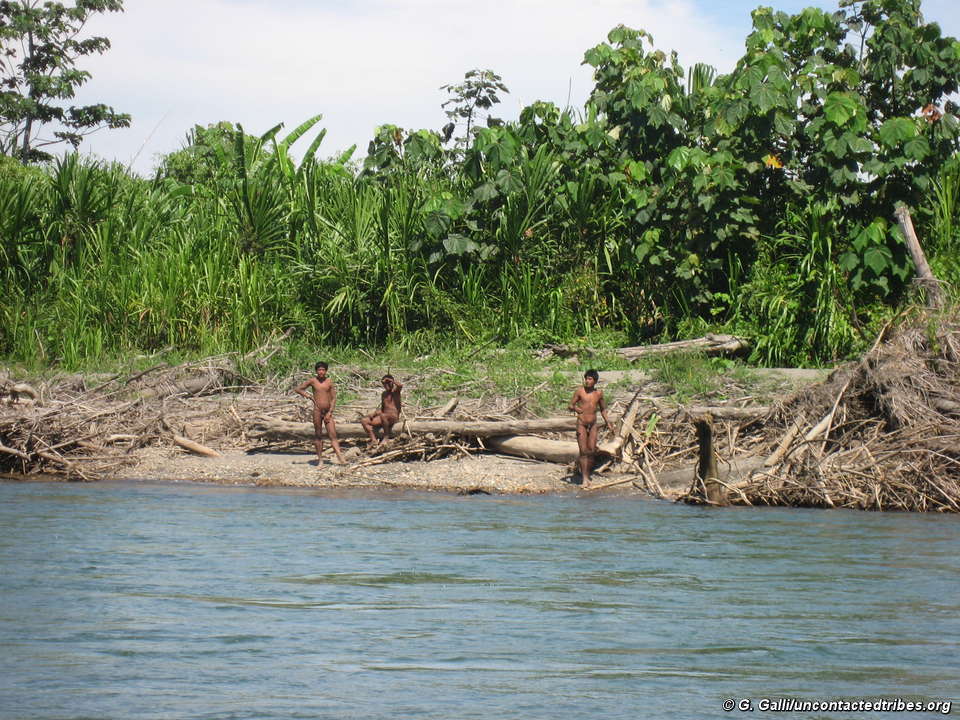'Human Safaris' May Be Exploiting Isolated Tribes, Advocates Warn

Unscrupulous tour operators in the Amazon basin may be leading travelers alarmingly close to the territories of "uncontacted" people, according to tribal rights groups.
Advocates are particularly concerned about a spate of recent encounters with the Mashco-Piro people, a group that lives in voluntary isolation in Peru's densely forested Madre de Dios region, near the border with Brazil.
Representatives with Peru's Native Federation of the Madre de Dios River and Tributaries, or FENAMAD, issued a statement this week voicing their alarm about reports of tourists filming and photographing Mashco-Piro people and leaving items like clothing on the riverbanks for the tribe. [Gallery: Images of Uncontacted Tribes]
"It's high time the Peruvian government put words into action instead of these endless meetings about devising protocols and policies," FENAMAD President Klaus Quicque said in the statement.
Every few months, campaigners at the advocacy group Survival International get emails from tourists who just got back from a trip to Peru and are eager to share photos they took of the Mashco-Piro.
"It's been happening with more and more frequency," Rebecca Spooner, Survival International's Peru campaigner, told Live Science. Spooner said the travelers are usually well-intentioned, but she has to explain to them that her organization only publishes photos of uncontacted people for very specific reasons — namely, to prove the existence of tribal people, which is sometimes denied by parties, such as logging companies, with a vested interest in developing the region.
Survival International began investigating the issue of possible "human safaris" along the Madre de Dios River two years ago. Representatives of the organization posed as tourists and called several tour operators working in Peru, asking what kind of opportunities they would have for traveling into Mashco-Piro territory if they booked a trip. The activists found that many of these guides actually promoted Mashco-Piro sightings as part of their tour packages, Spooner said. (Today, a simple Google search will show that it's not difficult to find tour companies that advertise such encounters.)
Sign up for the Live Science daily newsletter now
Get the world’s most fascinating discoveries delivered straight to your inbox.
Similar situations have played out in other parts of the world. The Jarawa people living in India's Andaman Islands have become a tourist attraction, despite campaigns to close the main road that goes through the territory of the voluntarily isolated tribe. (A short Vice documentary gives a glimpse into the notorious "human safaris" in this region.)
It's not just a matter of exploitation; tribal people could become fatally ill from diseases like the flu if they came into contact with outsiders.
"This is obviously really worrying, because the Mashco-Piro are an uncontacted tribe and are extremely vulnerable," Spooner said. "They don't have resistance to common diseases."
"Uncontacted" is a bit of a misnomer, though. Most of the peoples who are considered uncontacted are aware of the outside world, and some maintain ties with nearby tribes, but they choose to live in relative isolation.
The presence of the Mashco-Piro people has been recorded since the 1970s, and they've long resisted contact with missionaries and other visitors. But in another alarming trend, the Mashco-Piro people have been coming out onto the riverbanks more and more frequently, and advocates aren't sure why, Spooner said.
The recent emergence of another nearby tribe indicates that uncontacted people may be facing pressure from illegal logging and drug traffickers in the region. Earlier this summer, a group of people who spoke a Panoan language and said they lived near the source of the Envira River in Peru made contact with a settlement in Brazil. Through a translator, the tribespeople told of violent attacks they experienced at the hands of outsiders in their home territory.
Survival International and FENAMAD have called on the Peruvian government to better equip guard posts to protect the Mashco-Piro from outsiders intruding on the tribe's land. Peru should also prevent tour operators from stopping their boats when the Indians appear and forbid tourists from taking pictures or leaving gifts, the organizations say.
Spooner added that the Madre de Dios Reserve, which has been set aside for indigenous tribes, was originally proposed to cover about 7,700 square miles (20,000 square kilometers), but it actually covers only about 3,000 square miles (7,770 square kilometers) today. Survival International and FENAMAD have asked for Peru to expand this protected area. The groups also called for an official contingency plan in cases of contact, as well as measures to prevent unwanted contact.
Follow Megan Gannon on Twitter and Google+. Follow us @livescience, Facebook & Google+. Original article on Live Science.










